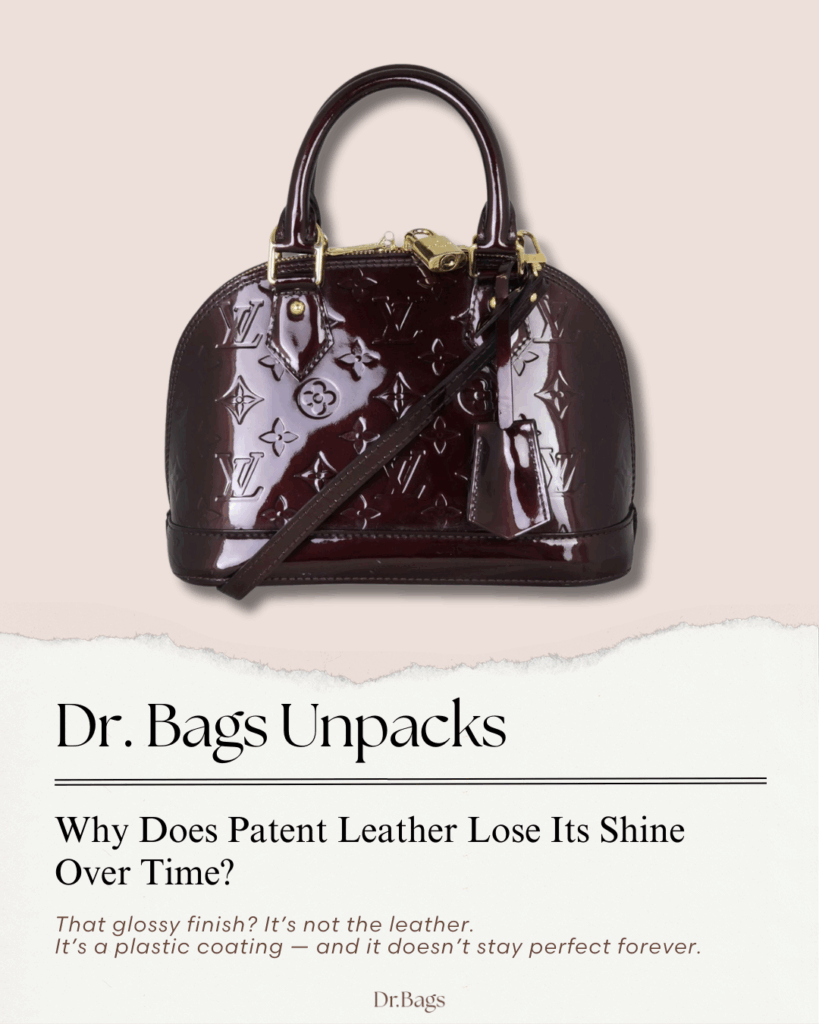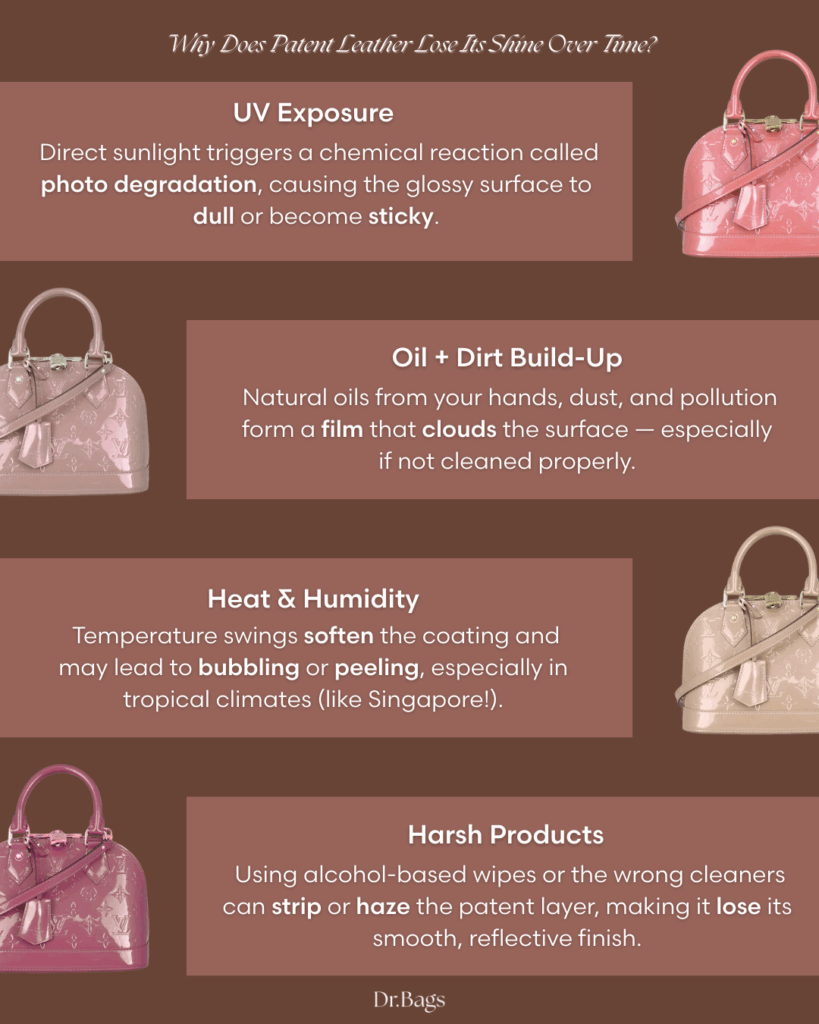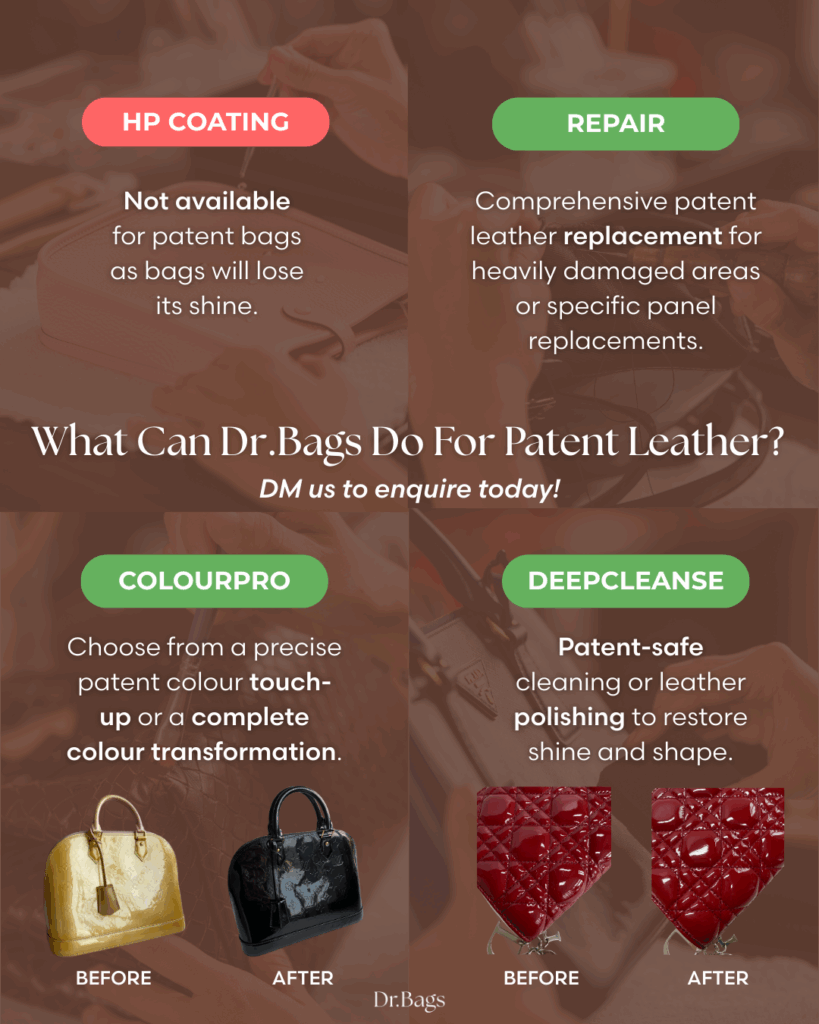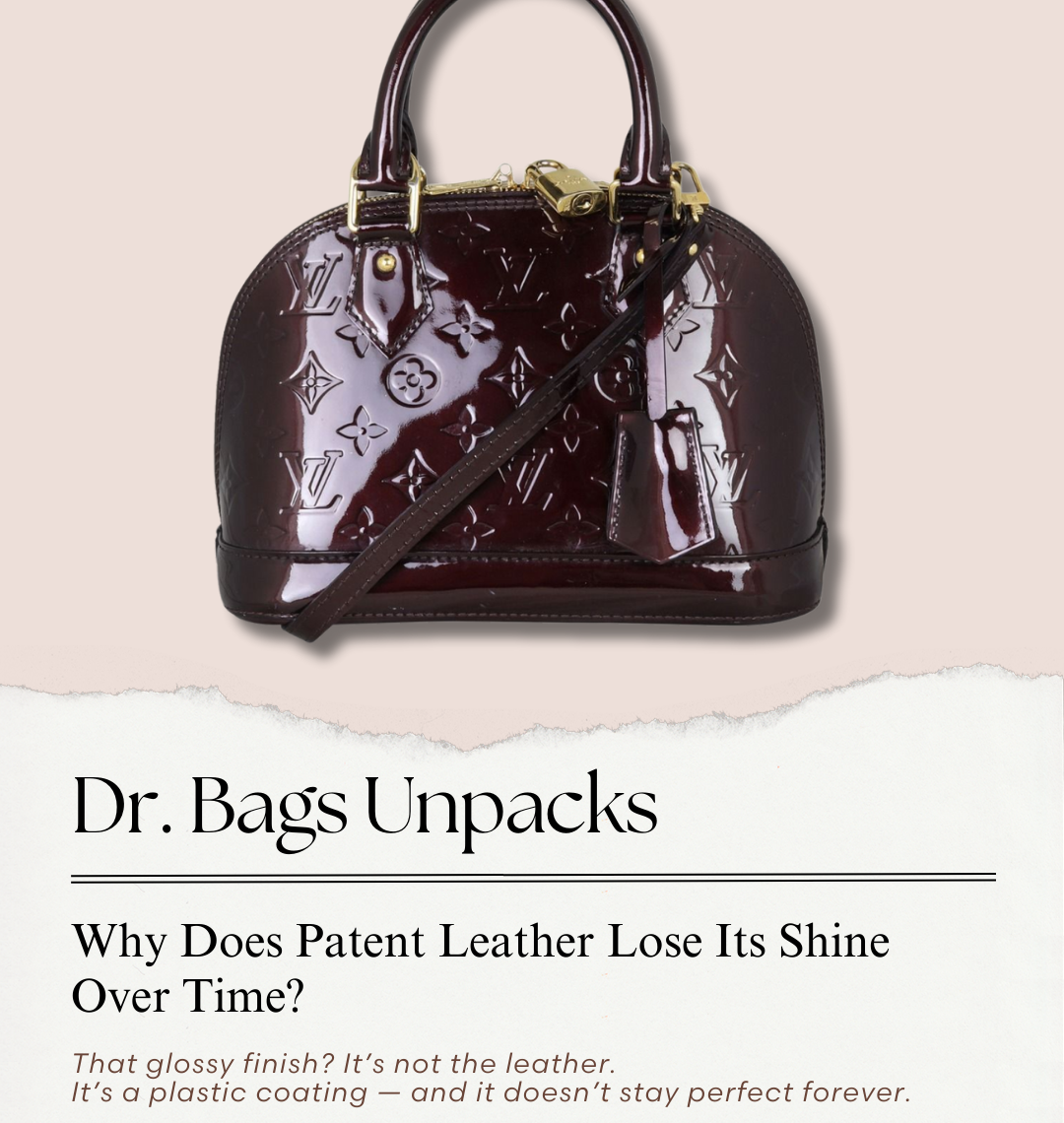Patent leather is admired for its flawless and mirror-like finish, a hallmark of luxury bags. Yet even with careful handling, its glossy surface can fade or appear dull over time. Understanding the science behind this process can help you preserve the shine of your cherished accessories.

1. Environmental Factors and Photodegradation
Patent leather’s glossy finish is typically made from a layer of polyurethane, acrylic or lacquer applied over the leather. Exposure to sunlight, particularly ultraviolet (UV) radiation can trigger photodegradation—a chemical breakdown of the polymer coating. UV light breaks the polymer chains, weakening the finish and causing it to lose reflectivity. Over time, this manifests as yellowing, fading or a chalky appearance.
Temperature and humidity also play a role. High heat can soften the coating, making it more susceptible to scratches, while excessive humidity can lead to micro-bubbles or clouding within the finish.
2. Accumulation of Oils, Dirt and Sweat
Patent leather looks pristine when clean but natural oils from hands, skin cells, sweat and dust accumulate over time. These residues form a thin, semi-opaque film that scatters light, reducing the reflective shine. If not removed, this layer can react further with the leather and coating which accelerates surface dulling.
3. Chemical Reactions
Patent leather is sensitive to acids, solvents and other chemicals. Common triggers include:
- Acidic substances: Perfumes, lotions or even acidic air pollutants can slowly hydrolyse the polymer coating breaking chemical bonds and reducing gloss.
- Solvents: Alcohols, acetone which is commonly found in nail polish removers and harsh cleaners can dissolve or weaken the top layer, leaving it matte or uneven.
- Oxidation: Over time, oxygen in the air reacts with the polymer surface, particularly in the presence of light, forming tiny cracks and dull spots.
Essentially, the glossy finish is a delicate polymer film and these reactions disrupt the smooth surface necessary for high reflectivity.
4. Mechanical Wear and Friction
Everyday use creates micro-abrasions. Rubbing against clothing, surfaces or other items causes minute scratches in the coating, scattering light and reducing the mirrored effect. Areas like bag corners, handles or folds are especially prone to this mechanical dulling.
5. Aging of Leather and Coating
Over years, both the leather substrate and its patent coating undergo natural ageing. The leather may lose some of its natural oils and flexibility, while the coating can shrink slightly, creating fine cracks. Together, these effects subtly reduce shine even without heavy use.

How to Maintain Patent Leather’s Shine
- Store carefully: Keep bags in a cool, dry and well-ventilated space, away from direct sunlight. Click here to find out more about how to store your bags properly.
- Avoid harsh chemicals: Alcohol-based cleaners, perfumes, and solvents can damage leather finishes so keep them away from your bags.
- Minimise friction: Store bags in dust bags or wrap in acid-free tissue paper to prevent surface scratches.
- Clean regularly: Gently wipe the surface with a soft microfibre cloth to remove oils and dirt especially after each use.
- Use protective products: Apply cleaners or conditioners formulated specifically for patent leather to maintain the finish and keep the surface smooth and glossy.
If you are unsure which microfibre cloth, cleaner or conditioner to use, these items are available in our shop!



Leave a Reply